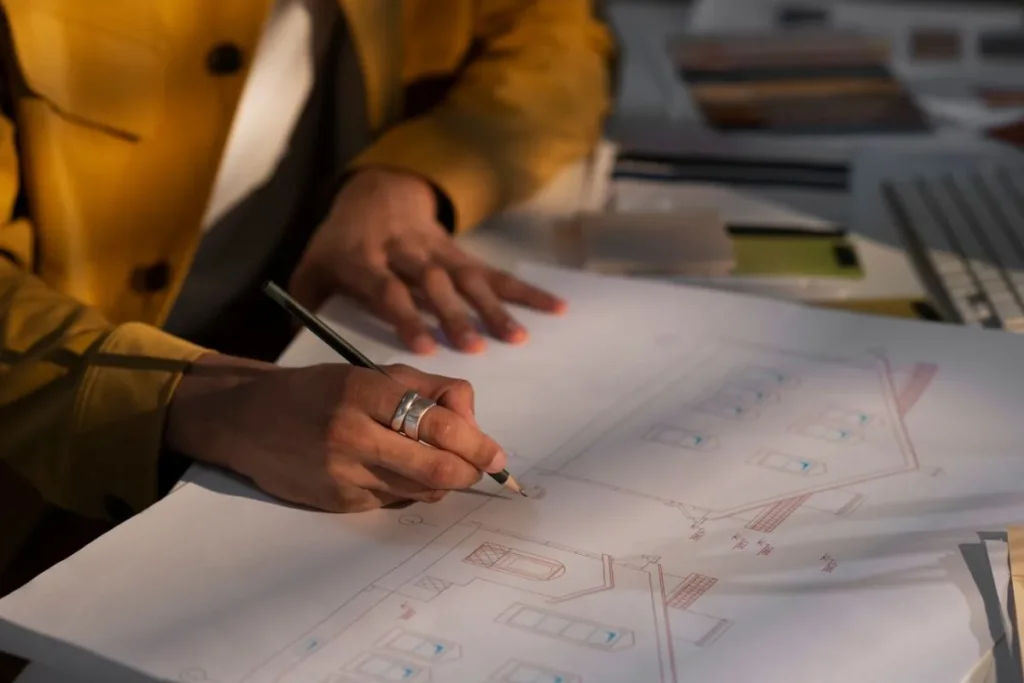Mathematical Techniques for Enhancing Augmented Reality have become essential in creating seamless and interactive experiences. The integration of these techniques ensures a high level of precision and realism. Modern AR applications now rely heavily on mathematics to deliver compelling visualizations.
Geometry, calibration, and algorithms are key aspects. They enhance spatial accuracy and visual coherence. These mathematical models underscore AR’s potential in various sectors.
This article delves into specific techniques used in AR. It will discuss the methods and benefits of incorporating mathematics. By understanding these, developers can significantly enhance AR capabilities.
Fundamental Mathematical Concepts in AR
Geometry in Augmented Reality
Geometry is central to augmented reality applications. It allows for accurate mapping of virtual objects onto the real world. Techniques such as Euclidean geometry provide algorithms needed for spatial alignment.
Using geometric transformations, AR systems can scale, rotate, and translate objects. This ensures that virtual elements adapt fluidly to the user’s perspective.
Moreover, computational geometry aids in collision detection. It helps in creating interactive environments where virtual objects interact realistically with the real world.
Calibration Techniques
Calibration is crucial for aligning the AR system’s virtual camera with the physical world. Accurate calibration ensures that the overlay of virtual graphics corresponds directly with real-world objects.
Several mathematical approaches are used for calibration. Techniques like camera matrix calculation and distortion correction are vital. These processes adjust how virtual objects are rendered to appear naturally in the user’s environment.
Proper calibration minimizes errors and improves the overall AR experience. It makes interactions intuitive and visually coherent.
Mathematical Models and Algorithms
Mathematical models form the basis of AR algorithms. These algorithms handle data processing needed for rendering virtual objects accurately.
Common models include linear algebra and matrix operations. They are fundamental in transforming object coordinates from virtual to real-world space.
Algorithms enable advanced functionalities like real-time tracking and object recognition. Robust algorithms ensure smooth and responsive AR experiences.
Enhancing Visualization with Mathematical Techniques
Improving Precision in Visualization
Precision is vital for realistic AR experiences. Techniques like geometric transformations and matrix manipulations enhance visual accuracy.
Real-time updating of visual data based on user movement relies on precise mathematical calculations. This ensures that virtual elements remain stable and correctly positioned.
Accurate visualization enhances user engagement. It creates a believable and immersive AR environment.
Advanced Rendering Techniques
Rendering techniques determine how virtual objects appear. Advanced techniques utilize mathematics to create lifelike shadows, reflections, and textures.
These techniques ensure that virtual elements blend seamlessly with the real world. Light and material properties are calculated using mathematical models.
Such enhancements elevate the overall visual quality of AR applications. They provide depth and realism to virtual objects.
Integration of 3D Models
3D models are a staple of AR applications. Mathematics enables the conversion of detailed models into AR-friendly formats.
Applying algorithms for mesh simplification and texture mapping are essential. These processes balance detail and performance for optimal AR rendering.
Integration of mathematical techniques ensures that 3D models look realistic and function smoothly within AR environments.
Practical Applications and Benefits
Industry and Enterprise Solutions
Mathematics in AR is transformative across industries. From manufacturing to healthcare, precise AR applications enhance operations.
For instance, in manufacturing, mathematical techniques enable precise overlay of schematics and instructions. This makes complex assembly tasks more manageable.
In healthcare, AR aids in surgical planning. Detailed anatomical models enhance precision, leading to better patient outcomes.
Enhanced User Interaction
User interaction in AR relies heavily on real-time response. Mathematical algorithms ensure that the system’s feedback is quick and accurate.
Gesture recognition and spatial mapping are improved through mathematical enhancements. These features are crucial for an intuitive user experience.
Enhanced interaction elevates user satisfaction and engagement. It makes AR applications more practical and enjoyable.
Gaming and Entertainment
AR gaming benefits significantly from mathematical techniques. Accurate physics simulations create immersive game environments.
Mathematics ensures that virtual elements behave consistently with real-world physics. This adds to the realism and fun of AR games.
Entertainment applications also leverage these techniques. Interactive experiences become more engaging with precise AR enhancements.
Future Prospects of Mathematical Techniques in AR
Advancements in Computational Power
Increasing computational power will enhance AR capabilities. Mathematical techniques will become more sophisticated and efficient.
Real-time data processing will improve, making AR experiences smoother. Advanced algorithms will handle more complex tasks effortlessly.
This progression will open new possibilities for AR applications. It will enable richer, more immersive experiences.
Evolution of Mathematical Models
Mathematical models are continually evolving. New theories and methods will drive AR development forward.
Emerging models will offer better accuracy and performance. They will improve how virtual elements interact with the real world.
This evolution will keep AR at the cutting edge of technology. It will maintain high standards in user experience and application functionality.
Integration with Artificial Intelligence
AI integration will amplify the impact of mathematics in AR. Machine learning algorithms will enhance object recognition and tracking.
Predictive models will improve system responses. This synergy between AI and mathematics will create smarter AR applications.
Intelligent AR systems will offer unprecedented levels of interactivity. They will revolutionize how users engage with virtual and real-world environments.
Looking Ahead
Mathematical Techniques for Enhancing Augmented Reality are crucial for advancing the field. Techniques like geometry, calibration, and modeling ensure rich and immersive AR experiences.
As computational power grows and models evolve, the impact of mathematics in AR will deepen. This will lead to more sophisticated and responsive applications.
Combining mathematics and AI will further push the boundaries. Continued innovation will make AR an integral part of everyday life.
Embrace the future of AR with an understanding of these techniques. Let’s explore the endless possibilities together.
Frequently Asked Questions
How does geometry enhance AR?
Geometry allows for accurate placement and interaction of virtual objects within the real world. It ensures spatial coherence.
Why is calibration important?
Calibration aligns the virtual and real worlds. This minimizes visual and spatial errors in AR applications.
What role do algorithms play in AR?
Algorithms process data for rendering accurate virtual elements. They enable real-time tracking and object recognition in AR.
How will AI impact AR applications?
AI will enhance object recognition and system responsiveness. It will make AR applications smarter and more interactive.
What is the future of AR and mathematics?
Future advancements in computational power and models will deepen AR’s impact. Mathematics will continue to drive innovation in this field.




